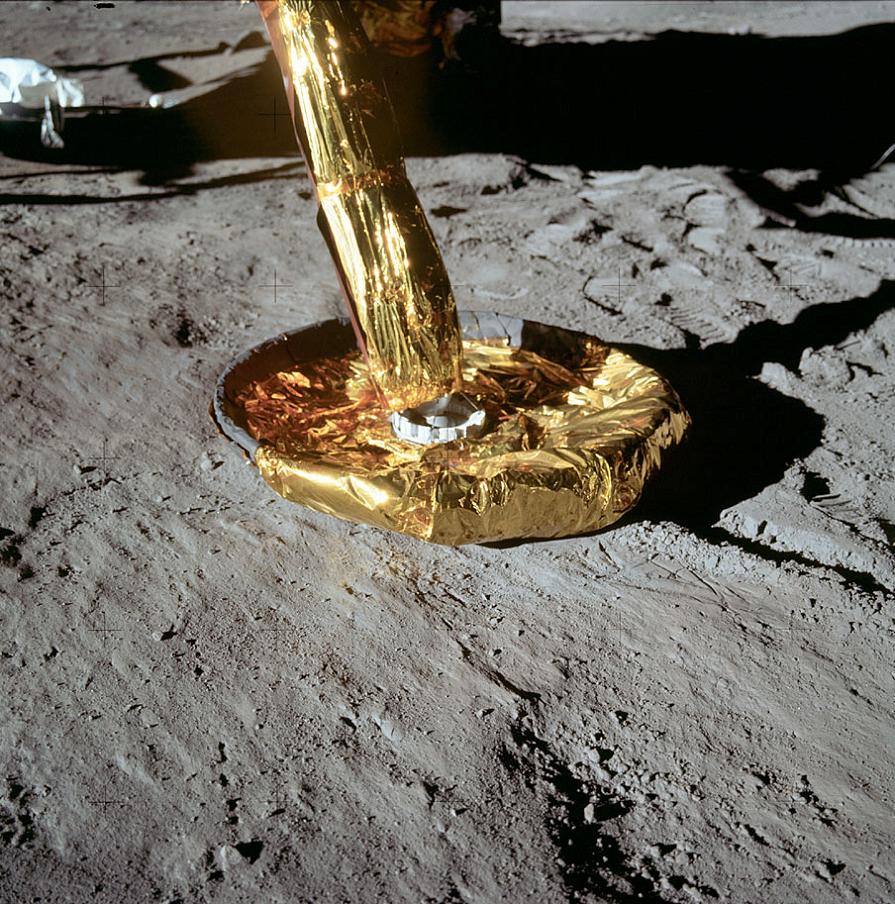RSF: Neil Armstrong Gone, Moon Hoax Going
This is the show from Friday, August 31st, 2012.
Summary:

* Dr. Carl Werner Pressures Museums to Show the Birds: Real Science Friday co-hosts Bob Enyart and Fred Williams discuss:
- the passing of Neil Armstrong
- the communion that Buzz Aldrin partook of on the moon
- the truth that NASA feared too much dust on the moon
- the need for creationists to begin using again the moon-dust argument
- the definitive rebuttals to the various moon landing hoax allegations, and
- the right cross (punch in the face, in Christian love of course) that Aldrin delivered right on target to a conspiracy theory filmmaker.
* On the Moon Dust: For more about NASA's serious concern that a four billion year-old moon might have had a hundred feet or more of accumulated dust on it's surface, check out RealScienceFriday.com//NASA-feared-deep-moon-dust. For the argument that the missing dust should be used by biblical creationists, see Dr. Walt Brown's brief summary and then his careful analysis of how much dust should be on an old moon (a lot). Real Science Friday believes that because the other young-earth creation ministries continue to say that the moon-dust argument should be avoided, that they then owe it to the public to show where Dr. Brown's assembled evidence or mathematical calculations are in error. Better yet though, other creation ministries should themselves adopt this powerful argument for a young moon.
For today's show RSF recommends
What You Aren't Being Told About Astronomy:
Our Created Solar System!

Today’s Resources: Get the Spike Psarris DVD What You Aren't Being Told About Astronomy and Vol. II, Our Created Stars and Galaxies! Have you browsed through our Science Department in the KGOV Store? Check out especially Walt Brown’s In the Beginning and Bob’s interviews with this great scientist in Walt Brown Week! You’ll also love Dr. Guillermo Gonzalez’ Privileged Planet (clip), and Illustra Media’s Unlocking the Mystery of Life (clip)! You can consider our BEL Science Pack; Bob Enyart’s Age of the Earth Debate; Bob's debate about Junk DNA with famous evolutionist Dr. Eugenie Scott; and the superb kids' radio programming, Jonathan Park: The Adventure Begins! And Bob strongly recommends that you subscribe to CMI’s tremendous Creation magazine!
This is the show from Friday, August 31st, 2012.
Summary:

* Dr. Carl Werner Pressures Museums to Show the Birds: Real Science Friday co-hosts Bob Enyart and Fred Williams discuss:
- the passing of Neil Armstrong
- the communion that Buzz Aldrin partook of on the moon
- the truth that NASA feared too much dust on the moon
- the need for creationists to begin using again the moon-dust argument
- the definitive rebuttals to the various moon landing hoax allegations, and
- the right cross (punch in the face, in Christian love of course) that Aldrin delivered right on target to a conspiracy theory filmmaker.
* On the Moon Dust: For more about NASA's serious concern that a four billion year-old moon might have had a hundred feet or more of accumulated dust on it's surface, check out RealScienceFriday.com//NASA-feared-deep-moon-dust. For the argument that the missing dust should be used by biblical creationists, see Dr. Walt Brown's brief summary and then his careful analysis of how much dust should be on an old moon (a lot). Real Science Friday believes that because the other young-earth creation ministries continue to say that the moon-dust argument should be avoided, that they then owe it to the public to show where Dr. Brown's assembled evidence or mathematical calculations are in error. Better yet though, other creation ministries should themselves adopt this powerful argument for a young moon.
For today's show RSF recommends
What You Aren't Being Told About Astronomy:
Our Created Solar System!

Today’s Resources: Get the Spike Psarris DVD What You Aren't Being Told About Astronomy and Vol. II, Our Created Stars and Galaxies! Have you browsed through our Science Department in the KGOV Store? Check out especially Walt Brown’s In the Beginning and Bob’s interviews with this great scientist in Walt Brown Week! You’ll also love Dr. Guillermo Gonzalez’ Privileged Planet (clip), and Illustra Media’s Unlocking the Mystery of Life (clip)! You can consider our BEL Science Pack; Bob Enyart’s Age of the Earth Debate; Bob's debate about Junk DNA with famous evolutionist Dr. Eugenie Scott; and the superb kids' radio programming, Jonathan Park: The Adventure Begins! And Bob strongly recommends that you subscribe to CMI’s tremendous Creation magazine!
